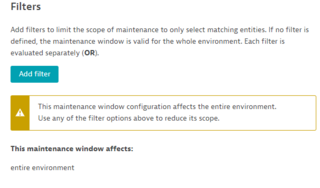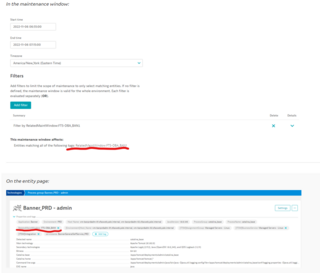Options
With maintenance windows, Dynatrace can identify periods of abnormal operation (downtimes, reduced performance periods, and high traffic events during load tests). Defining maintenance windows helps you to reduce alert spam and keep your baseline clean for accurate monitoring and alerting.
There are two types of Maintenance Windows.



